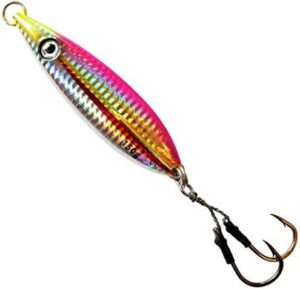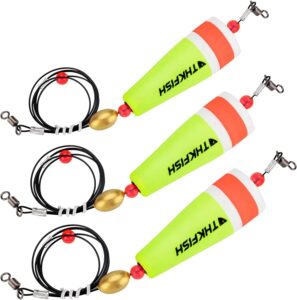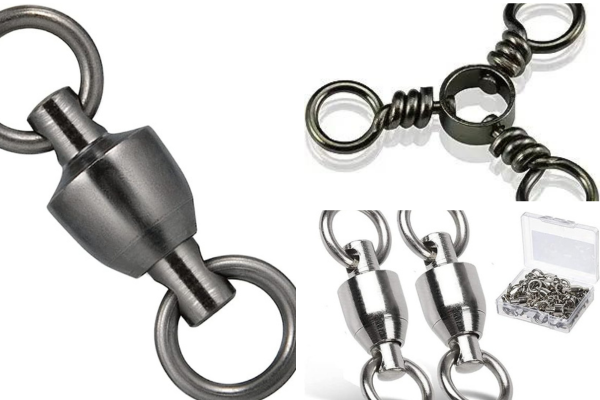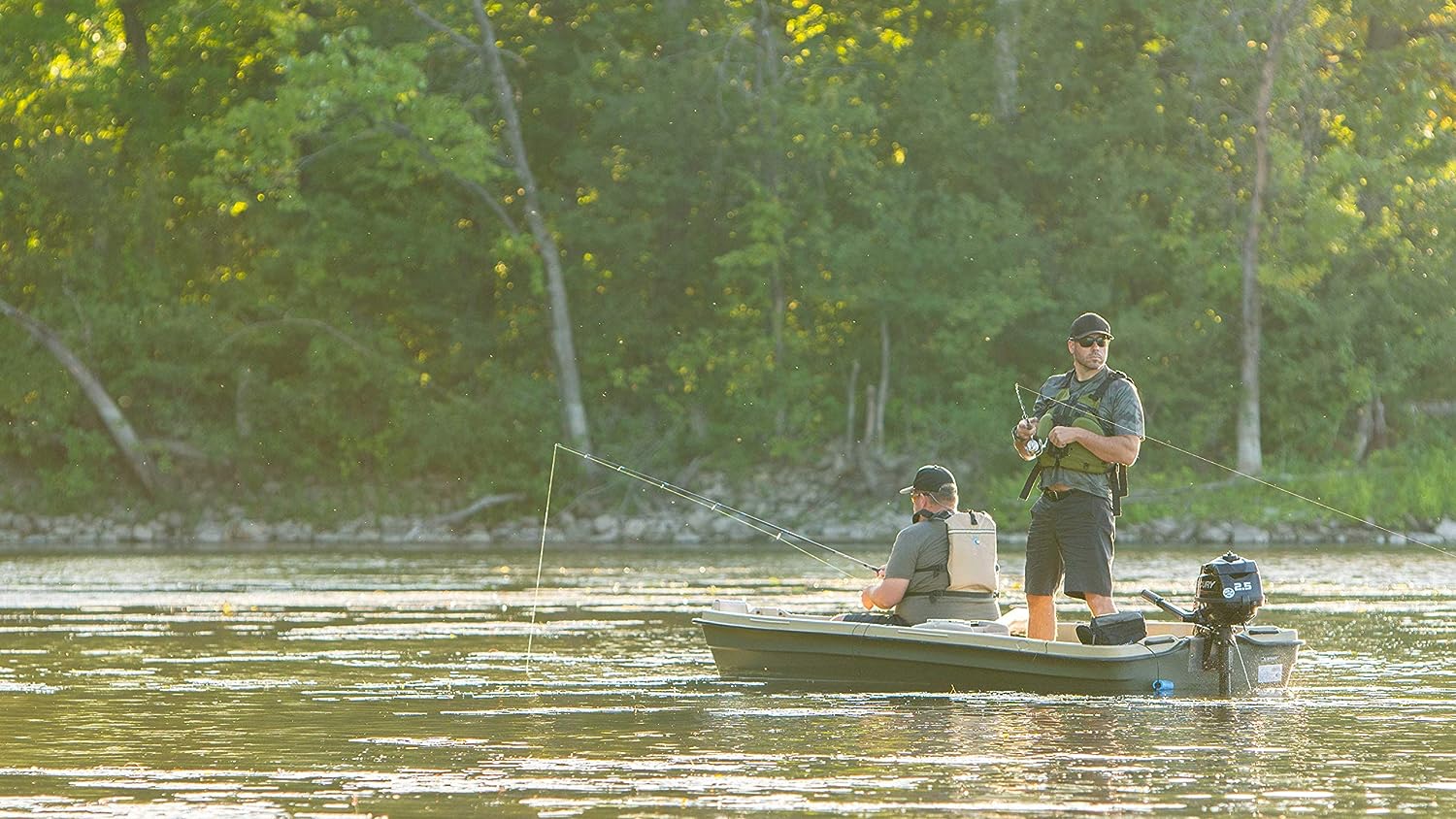Do you want to learn how to fish for salmon from shore? If so, this blog post is for you! In this post, we will discuss the best techniques and accessories for fishing salmon from shore.
We will also provide a few tips to help you get started. So, whether you are a beginner or an experienced angler, read on to learn more about fishing for salmon from shore.
Where to Fish for Salmon from Shore
When it comes to fishing for salmon from shore, there are a few things to keep in mind. First, you will need to find a good spot. Salmon tends to congregate near river mouths, so that is a good place to start looking.
Salmon prefer temperatures averaging at 55°F, they can easily found in the deep water, that among the fishing methods you can use is trolling would be the best technique and we’ll explain it later on. Also look for areas with plenty of rocks and logs, which provide cover for salmon as they hide from predators.
When Is the Best Time to Fish for Salmon From Shore?
The best time to fish for salmon from shore will depend on a few factors, such as the specific species of salmon you’re targeting, the time of year, and the water temperature. In general, though, early morning or late evening is usually the best time to try your luck at catching a salmon from shore.
The cool temperatures and low light levels during these times of day make salmon more active, so they’re more likely to bite at your bait. Plus, there are usually fewer people fishing at these times of day, so you won’t have to compete with as many other anglers for prime fishing spots.
Best Fishing Techniques for Salmon Fishing from Shore
Now that you know where and when to fish for salmon from shore, it’s time to learn about the best fishing techniques. One of the most popular and effective methods for catching salmon from shore is drift fishing.
Drift Fishing
It is a fishing technique in which the rig is allowed to drift along with the current while the anglers fish from it. The boat is usually equipped with a trolling motor to keep it moving at a slow speed and prevent it from getting stuck in one spot.
This type of fishing is best suited for situations where the fish are held near the bottom or near some type of structure, such as a submerged tree or underwater ledge. By allowing the boat to drift, the anglers can keep their baits in front of the fish for long periods of time, increasing the odds of getting a bite.
Additionally, this technique can be used to cover large areas of water quickly in search of active fish. It’s also important to cast your line upstream and then make it short so that your fishing rig can drift.
Jigging

Jigging is a type of fishing in which the angler uses a jig, which is a lure with a weighted head and a hook attached to the body. The jig is cast out into the water and then allowed to sink onto the bottom.
Once it reaches the bottom, the angler begins retrieving it by raising and lowering the rod tip. As the jig is retrieved, it will bounce along the bottom, imitating the movement of a small fish.
This action often triggers strikes from predators that are looking for an easy meal. Jigging can be an effective technique for catching salmon from shore, especially in areas with deep water and heavy currents.
Trolling

There are a few different techniques that can be used when trolling for salmon. One popular method is to use downriggers. Downriggers are devices that lower your lure or bait down into the water, away from the noise and commotion of the boat.
This often results in more strikes from fish, as they’re not spooked by the boat. Another common technique is to use weighted lures or lines, which allows you to troll at different depths. You can also troll with live bait, which is often very effective.
No matter what technique you use, there are a few things to keep in mind when trolling for salmon. First of all, it’s important to pay attention to the depth of the water you’re fishing in.
This will determine how deep you need to troll. Salmon often hang out near the bottom or in areas with plenty of covers, so it’s important to keep your bait or lure at the right depth. Additionally, it’s important to use a lure or bait that imitates the size and color of the fish that salmon are feeding on.
Float Fishing

Float fishing is another popular technique for catching salmon from shore. It involves using a float, which is a small device that’s attached to the line above the bait or lure. The float keeps the bait at a certain depth and also allows the angler to see when a fish bites.
This technique is often used in areas with heavy currents, as it allows the angler to keep their bait in front of the fish. It’s also a good technique to use in areas with submerged structures, such as trees or rocks.
When float fishing, it’s important to pay attention to the depth of the water and the size of the float. The depth of the water will determine how deep you need to set the float, and the size of the float will determine how much weight it can hold.
Fishing Accessories You Need for Fishing Salmon from Shore
There are a few key fishing accessories you’ll need if you’re hoping to fish for salmon from shore. First, you’ll need a good fishing rod and reel. Salmon is a pretty big fish, so you’ll want something that can handle the weight and force of their strikes. You also need to be sure your line is strong enough to stand up to these powerful fish.
Next, you’ll need some good bait. Salmon love shiny objects, so lures that mimic small fish or other prey are always a good bet. You can also use live bait, like worms or minnows, if you prefer. Just be sure to keep your bait natural-looking and smells fresh – salmon have a ve犀利士
ry keen sense of smell and can be easily put off by bait that’s starting to rot.
You can also bring an insulated cooler with you to keep your bait fresh. This is especially important if you’re using live bait and for preserving your catch.
Finally, you’ll need a few other miscellaneous items, like a net, a fish finder, and some extra line. These are all optional, but they can certainly come in handy.
Final Thoughts
Shore fishing for salmon can be a great way to spend a day, especially if you have the right gear. By following the tips we’ve provided and using the recommended accessories, you should be able to catch plenty of fish and enjoy your time. So get out there and start casting! What was your favorite tip for shore fishing for salmon?
Share the Love
If you found this post useful, please let others know about it by sharing it.
Related Posts
If you found this post useful, please explore others posts.


